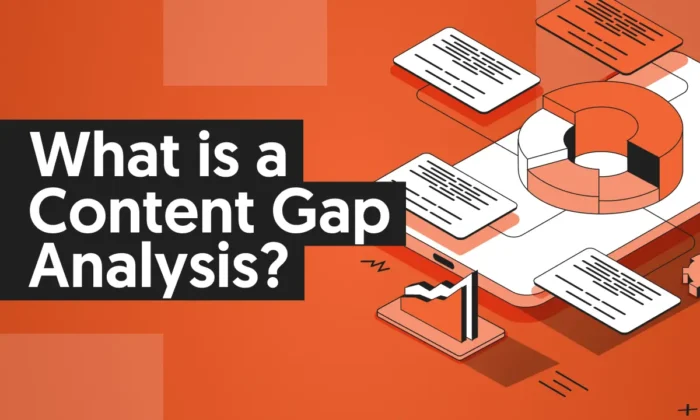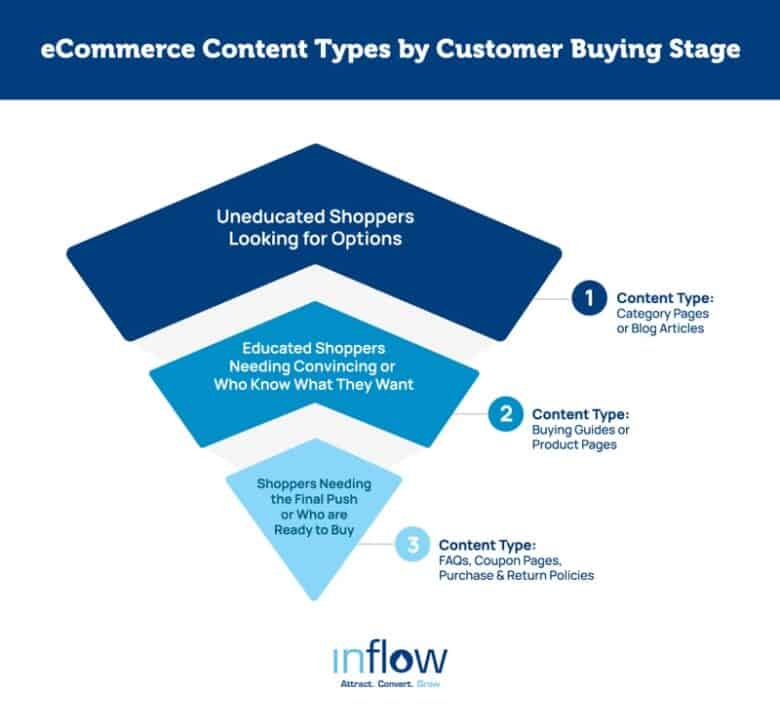Uncover the hidden gems in your content strategy with a comprehensive content gap analysis. What key pieces are you missing?

Image courtesy of via DALL-E 3
Table of Contents
Welcome, young readers! Today, we are going to dive into the fascinating world of content gap analysis. Have you ever wondered how websites know what topics to write about or what information to include? Well, content gap analysis is the key to unlocking those secrets. In simple terms, it’s like playing detective to discover what’s missing from your content. Let’s learn more about this exciting process together!
What is Content Gap Analysis?
Content gap analysis is like taking a magnifying glass to your website to see what’s there and, more importantly, what’s not there. It helps you figure out what topics or information your audience is looking for but can’t find. By identifying these gaps, you can create new and relevant content to improve your website and attract more visitors.
Why is it Important?
Imagine you have a favorite book, but some chapters are missing. Wouldn’t it be frustrating? The same goes for websites. By filling in the missing pieces in your content, you can provide a better experience for your audience, keep them engaged, and even boost your website’s performance. Content gap analysis is like completing the puzzle to make your website the best it can be!
Understanding Keywords
What Are Keywords?
Keywords are like magic words that help search engines like Google and Bing understand what your content is all about. They are the special words or phrases that people type into search engines when they are looking for information. For example, if someone is searching for “best chocolate cake recipe,” those words are the keywords they use to find relevant content.
How Search Engines Use Keywords
Search engines use keywords to match what people are searching for with the content that best fits their needs. When you search for something online, the search engine looks through its vast database of websites to find those that contain the keywords you used. The more relevant and informative your content is based on the keywords, the higher it may rank in search results. So, using the right keywords in your content can help make sure that people can find your website more easily.
Steps to Perform Content Gap Analysis
Now that you understand the importance of content gap analysis, let’s dive into the steps involved in conducting a thorough analysis to improve your content strategy.
Step 1: Identify Your Target Audience
Begin by figuring out who your target audience is. Understanding your audience is crucial because it helps you tailor your content to meet their needs and preferences. Consider factors like age, interests, and location to create content that resonates with them.
Step 2: Analyze Your Existing Content
Take a close look at the content you already have on your website or platform. Identify the topics you’ve covered and the areas where you might be lacking. This step will help you pinpoint gaps in your current content that need to be filled.
Step 3: Research Competitor Content
Study what your competitors are doing in terms of content creation. Look at the topics they’re covering, the keywords they’re targeting, and the engagement their content is receiving. By analyzing your competitors’ content, you can identify areas where you’re falling short and create a strategy to outperform them.
Step 4: Use Keyword Tools
Utilize keyword tools to identify relevant keywords and topics that are trending in your industry. Tools like Google Keyword Planner, SEMrush, or Ahrefs can help you discover new keywords and find content gaps that you can capitalize on. By incorporating popular keywords into your content, you can attract more organic traffic to your site.
Identifying Content Gaps
When you are working on creating content for your website or blog, it’s essential to make sure you are covering all the topics that your audience is interested in. In this section, we will discuss how to identify content gaps in your existing content so you can fill them with valuable information that your readers are looking for.

Image courtesy of neilpatel.com via Google Images
Common Gaps to Look For
One of the first things to do when you are trying to identify content gaps is to look for missing topics or questions that your audience may have. This could be something like not covering a specific aspect of a topic in detail, or failing to address a common question that your readers are asking.
For example, if you have a blog about gardening and you notice that you haven’t written about how to care for a specific type of plant that many of your readers may have in their gardens, that could be a content gap. By filling in these missing pieces of information, you can provide more value to your audience and keep them engaged with your content.
How to Prioritize Gaps
Once you have identified some content gaps in your existing content, it’s important to prioritize which ones to fill first. You can do this by considering a few different factors:
1. Relevance: Think about which content gaps are most relevant to your target audience and will provide them with the most value.
2. Importance: Consider which gaps are crucial for your audience to have a complete understanding of the topic or issue at hand.
3. Competition: Look at what your competitors are covering and see if there are any gaps they have filled that you haven’t. This can give you insight into what topics are important to cover.
By prioritizing your content gaps in this way, you can focus your efforts on creating content that will have the most impact on your audience and help you reach your content marketing goals.
Creating Content to Fill the Gaps
So, you’ve identified the missing pieces in your content puzzle. Now it’s time to brainstorm ideas to fill those gaps! One way to come up with new content is to think about what questions your audience might have that you haven’t answered yet. You can also look at trending topics in your industry or do some research to see what your competitors are covering that you’re not. By brainstorming different ideas, you can create fresh and engaging content that will keep your readers interested.
Writing and Formatting Tips
Once you have your ideas in place, it’s important to effectively communicate them through your writing. Keep your sentences clear and concise, and use simple language that your readers will easily understand. Break up your content into short paragraphs and use subheadings to organize your thoughts. Make sure to include relevant keywords that you want to rank for, but don’t overstuff your content with them. Finally, don’t forget to add visuals like images or videos to make your content more engaging and appealing to your audience.
Measuring Success
In order to know if your efforts in conducting a content gap analysis are paying off, it’s essential to measure your success. By tracking specific metrics and using the right tools, you can gauge the effectiveness of the new content you’ve created and identify areas for improvement.

Image courtesy of www.heretto.com via Google Images
Metrics to Track
One important metric to track is the increase in website traffic to the pages where you’ve added new content. If more people are visiting these pages, it’s a good sign that your content is resonating with your audience. Additionally, monitoring the time visitors spend on these pages can help determine if the content is engaging enough to keep them interested.
Tools for Measuring Success
There are a variety of tools available that can help you measure the success of your content gap analysis efforts. Google Analytics is a popular tool that provides detailed insights into website traffic, user behavior, and more. It can show you which pages are performing well and where improvements can be made. Other tools like SEMrush and Ahrefs can help you see how your content is ranking compared to your competitors and identify areas for growth.
Tips and Tricks
When conducting content gap analysis, there are some common mistakes to steer clear of. One mistake is solely focusing on keywords without considering the quality of the content. Remember, content should always be valuable and relevant to the audience, not just filled with keywords. Another mistake is neglecting to update your analysis regularly. Content trends change, so it’s crucial to keep your analysis up to date to stay ahead of the game.
Best Practices
For continuous improvement in content creation, there are some best practices to follow. Firstly, always keep an eye on your competitors and industry trends. By staying informed, you can identify gaps and opportunities for improvement. Secondly, engage with your audience. Ask for feedback, conduct surveys, and pay attention to comments to understand what your audience wants. Lastly, test and refine. Experiment with different content formats, keywords, and strategies to see what works best for you.
Summary
Content gap analysis is all about discovering what’s missing in your content and filling those gaps to improve your content strategy. By identifying areas where your content can be improved, you can better serve your audience and boost your search engine visibility.

Image courtesy of www.goinflow.com via Google Images
Keywords play a crucial role in content gap analysis as they help search engines understand what your content is about and how relevant it is to users. By using the right keywords, you can attract more traffic to your website and provide valuable information to your audience.
The steps to perform content gap analysis involve identifying your target audience, analyzing your existing content, researching competitor content, and using keyword tools to find gaps. By following these steps, you can uncover opportunities to create new and valuable content.
When identifying content gaps, look for common gaps such as missing topics or questions that your audience might have. Prioritize these gaps based on their importance and relevance to your audience to ensure you’re addressing their needs effectively.
Creating content to fill the gaps involves brainstorming ideas and implementing writing and formatting tips to produce high-quality content. By focusing on providing value to your audience, you can create content that resonates and drives engagement.
Why It’s Always Important to Review
Continuous review and improvement of your content is crucial for staying relevant and engaging with your audience. By regularly performing content gap analysis and adapting to changing trends and preferences, you can ensure that your content remains valuable and competitive in the digital landscape.
Want to turn these SEO insights into real results? Seorocket is an all-in-one AI SEO solution that uses the power of AI to analyze your competition and craft high-ranking content.
Seorocket offers a suite of powerful tools, including a Keyword Researcher to find the most profitable keywords, an AI Writer to generate unique and Google-friendly content, and an Automatic Publisher to schedule and publish your content directly to your website. Plus, you’ll get real-time performance tracking so you can see exactly what’s working and make adjustments as needed.
Stop just reading about SEO – take action with Seorocket and skyrocket your search rankings today. Sign up for a free trial and see the difference Seorocket can make for your website!
Frequently Asked Questions (FAQs)
What if I Can’t Find Any Gaps?
If you’re having trouble identifying content gaps in your analysis, don’t worry! Here are a few tips that can help you conduct a more thorough examination. Firstly, try reaching out to your audience directly through surveys or feedback forms to get a better understanding of their needs and interests. Additionally, consider looking at industry trends and staying updated on current topics to ensure your content remains relevant. Lastly, don’t forget to regularly revisit your content and analytics to see if there are any areas that may need improvement.
How Often Should I Do Content Gap Analysis?
Performing content gap analysis regularly is crucial for maintaining a strong content strategy. It’s recommended to conduct a thorough analysis at least once every quarter to ensure that your content remains relevant and engaging for your audience. By staying proactive and continuously evaluating your content gaps, you can effectively optimize your content strategy and stay ahead of the competition.







